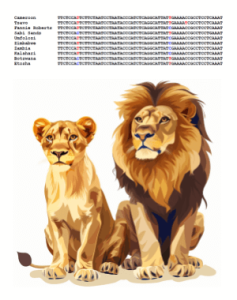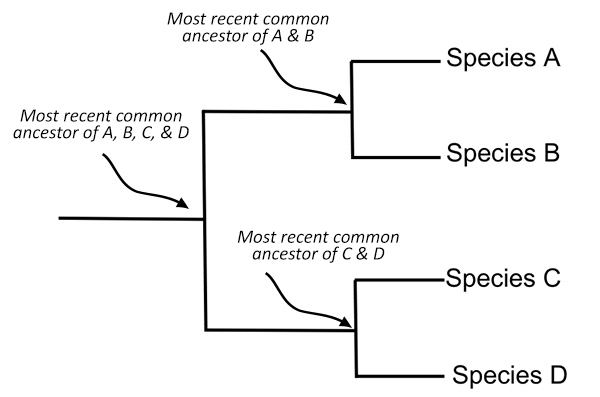
When it comes to understanding the majestic lion, there is more to the story than meets the eye. Beneath their regal appearance lies a complex genetic tapestry that tells us about their relationships and evolutionary history. Did all lions originate from the same group? Are they related to other big cats, like tigers? Explore a phylogenetic tree to discover the answer!
In this lesson, students examine snippets showing DNA sequences of several lions from different prides and different locations in Africa. Students highlight differences in the bases in the sequence to predict which groups of lions are more closely related. The sequences are from Cytochrome B, a protein found in the membranes of cells and mitochondria.
Once students have made their predictions, they will use an online tool to create a phylogenetic tree. By pasting the provided sequences into the tool, the program generates a phylogenetic tree. This will reveal which groups of lions are more closely related. Students then compare their original prediction to the generated model.
Lesson Information
I found this assignment at several biology websites. One also included locating lion prides using google maps, but I wanted to focus in on the genetics and evolution. Because this assignment is common, the original worksheet is posted on several cheat sites that provide answers. (You know the ones!) So, I changed the questions and added a few other tasks for students to complete. For instance, students must copy and paste the phylogenetic tree into the document.
The tree will reveal which lion groups are closely related.

This assignment does require internet connection. Though you could make paper copies, it would be easier to assign it through Google Classroom (or other LMS). This is mainly because students will need to copy and paste large chunks of text into the phylogeny program. Students can also type their analysis answers directly into the document.
If you want to edit the document, simply copy it to your personal drive.
Related Resources
Exploring Phylogenetic Trees with Wolves – compare dogs, wolves, and coyotes and analyze a phylogenetic tree of canids
Practice with Taxonomy and Classification: reinforcement activity, focuses on kingdoms and scientific names
Bear Species and DNA – activity from Learn.Genetics explores relationships between different types of bears
Analyze and Construct Cladograms – very simple cladograms showing how animals are organized by derived characters

